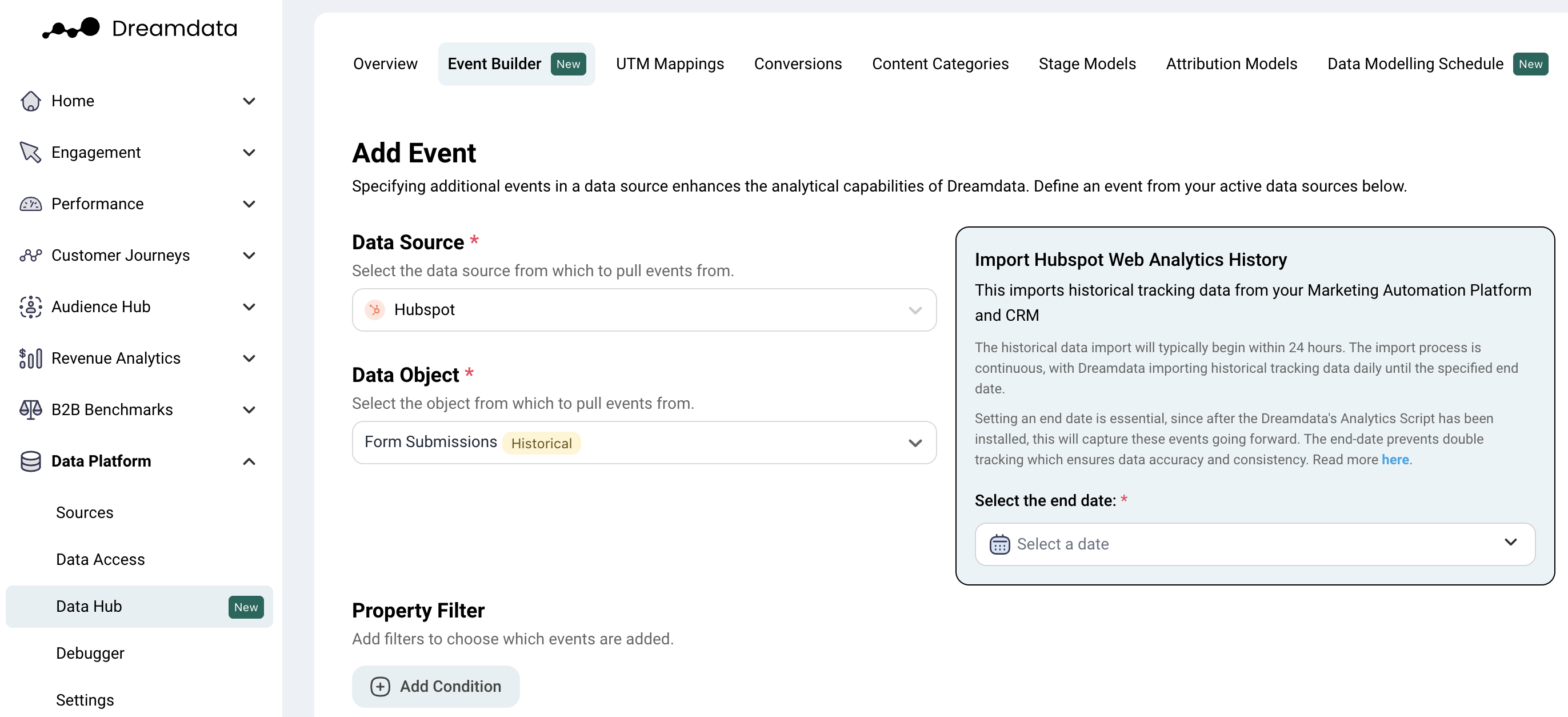Importing Historical Web Tracking Data into Dreamdata with the Event Builder
.
Importing historical web tracking data into Dreamdata is a powerful way for customers to gain deeper insights into past customer behavior and evaluate marketing performance. By analyzing historical data, businesses can better understand which marketing strategies and customer touchpoints have driven engagement and conversions over time. This capability is crucial for organizations aiming to optimize their customer journeys, refine marketing strategies, and ultimately improve return on investment..

.
Dreamdata supports the import of two types of historical web tracking data
- Page Views: Track user interactions and navigation across website pages, providing insights into which pages engage users and guide them through the sales funnel.
- Form Tracking: Track form submissions, giving visibility into lead generation activities and understanding which forms convert the most leads.
.
How It Works
The historical web tracking import-feature is accessible through Dreamdata's Event Builder (Data Platform > Data Hub > Event Builder). And setting up the import of specific historical tracking events is easy:
Select the tracking data to import. Select the source from were your historical resides, as well as the object and any property filters necessary, give it a name, and a description.
After defining which types of tracking events (such as page views and form tracking) to import, the historical data import process will begin, typically within 24 hours. The import process is continuous, with Dreamdata importing historical tracking data daily until the specified end date.
Setting an end date is essential, as Dreamdata's Analytics Script will already be capturing these events moving forward. An end-date prevents double tracking of web events, ensuring data accuracy and consistency.
By leveraging this feature, Dreamdata customers can conduct a thorough, historical analysis to enhance their understanding of customer behavior and drive more effective decision-making.
